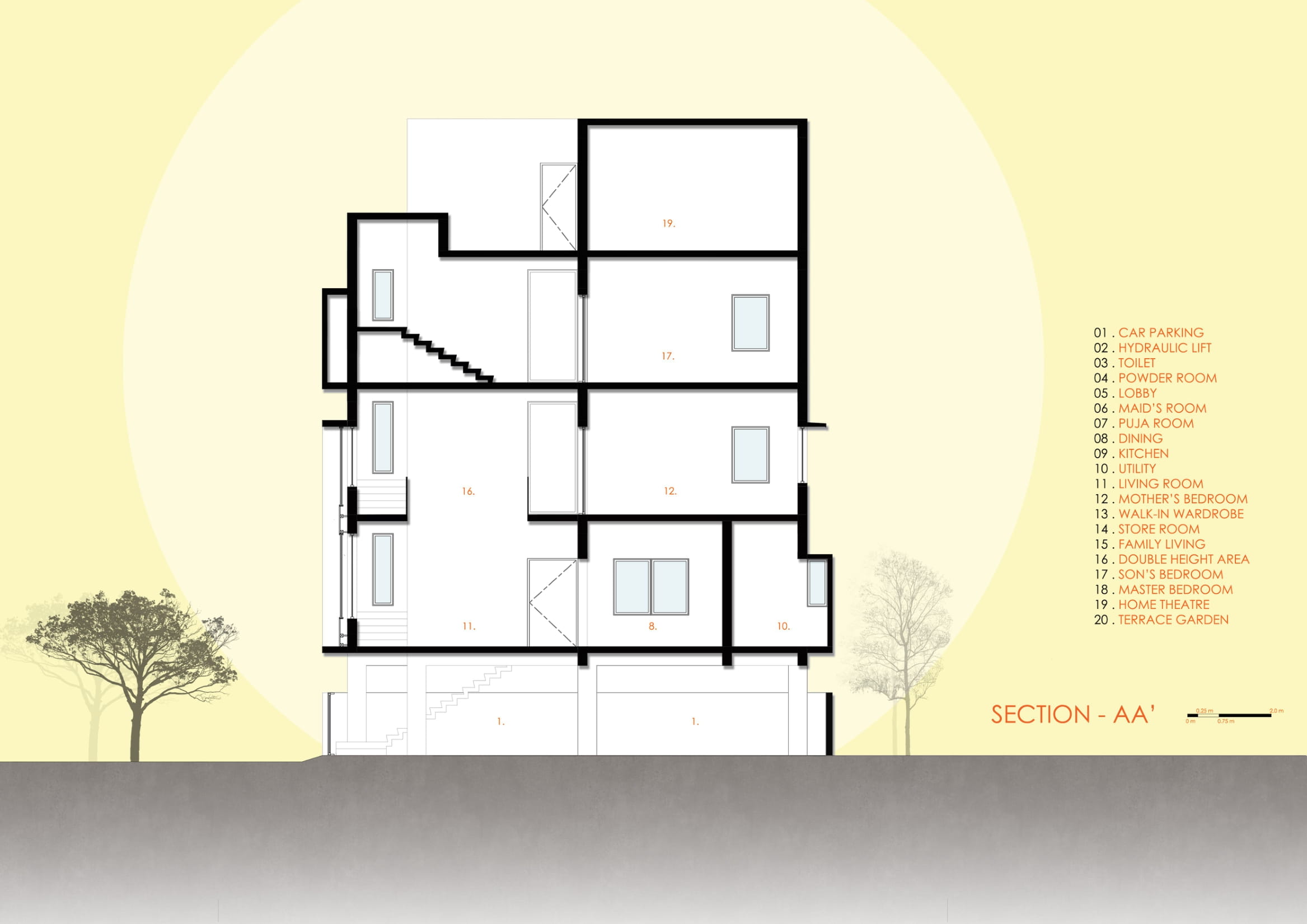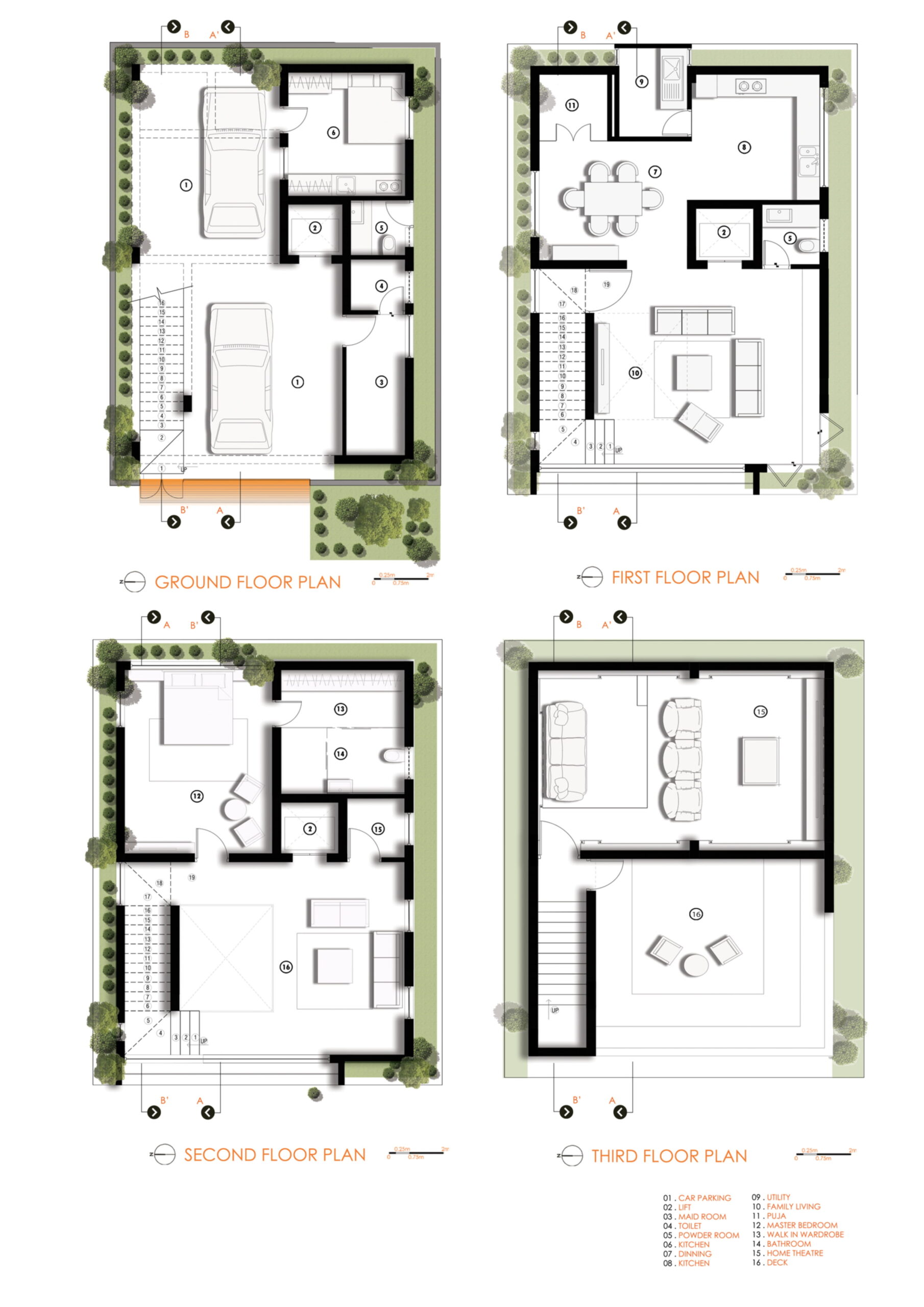CONCEPT:
The house was designed for a textile businessman from Rajasthan whose family spans three generations. The design brief consisted of three luxurious bedrooms, ample living spaces, entertainment and service areas.
The 30’X40’ site located in a growing residential area and flanked by dense multi dwellings on three sides, has a road to the West thus creating a design challenge.
Considering the small site and the multitude of requirements, our only option was to go vertical. The program is divided into four levels.
The Western side is ventilated by a double screening system of glass shutters and louvered screens. The residence was designed providing abundant natural ventilation and lighting. Passive cooling methods have been employed to combat the extreme Western heat.
At the ground level, one enters the parking area. From here, a single flight of stairs flanked on one side by an array of planter boxes takes one to the first floor where one enters the extremely spacious double-height drawing-room. This space is on the West, is ventilated by a double screening system of glass shutters and louvered screens, facilitating good airflow and in turn cutting down the harsh Western heat. The screen also opens out the living to the beautiful park ahead of the road and visually connects this space to the neighborhood. The double-height atrium here gives a sense of the explosion of volume and passively cools the space. This double-height atrium is flanked on one side with a feature wall of a stimulating geometric pattern abstracting the weave of the fabric to give a sense of connection to the client and visually connects to the level above. This level also accommodates other semi-private areas like the puja, dining, kitchen & powder room.
The next two floors accommodate private spaces such as bedrooms for the parent, master and children. They also house a common lounge space for the family which visually connects to the level below.
The language of interiors for these spaces is mostly derived and inspired from the weave patterns and traditional textile block printing that can be seen in the form of CNC cuttings and gold embossed stone tiles. These patterns are eloquent of the client’s line of business in the textile industry. Even the colour palette used is from the rich, diverse and vibrant region of Rajasthan where the client hails from.
The final level accommodates the entertainment areas such as the mini-home theater which spills out to a terrace garden in case of parties. The terrace garden having a double-layered floor finished with reclaimed wood also serves the purpose of passively cooling the master bedroom below.
Coming to the external treatment, the verticality is visually broken down into fragments of horizontal masses and louvers which serve the purpose of passively cooling the space as explained earlier. The stone cladding along the staircase wall on the façade provides double layering against the penetration of the harsh western heat and accentuates the vertical spine of the house.
Drawings:
Project Facts:
LOCATION: H.S.R. layout, Bangalore, Karnataka
PLOT AREA: 1200 sft
PHOTOGRAPHER: Anand Jaju



























